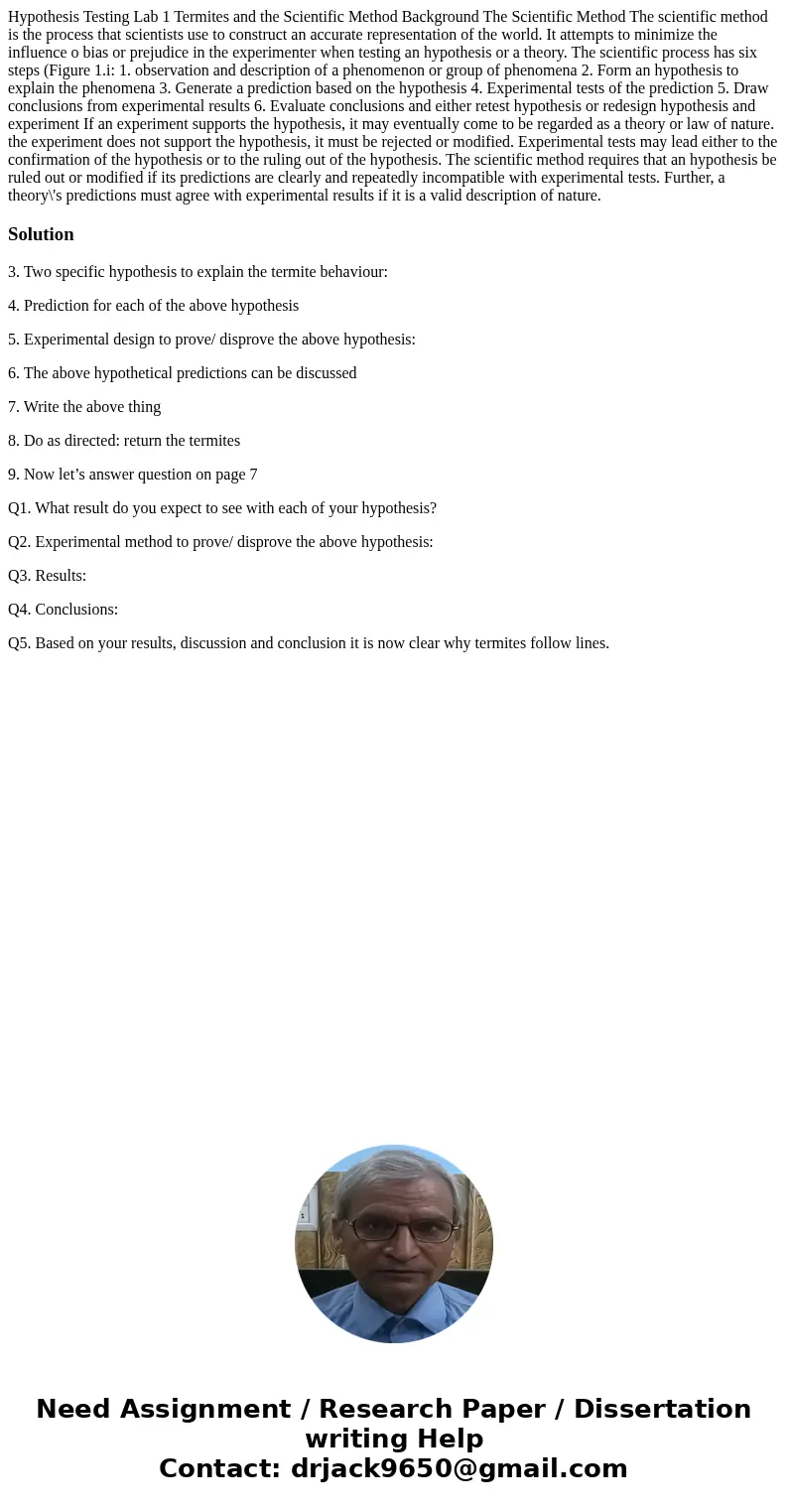Hypothesis Testing Lab 1 Termites and the Scientific Method
Hypothesis Testing Lab 1 Termites and the Scientific Method Background The Scientific Method The scientific method is the process that scientists use to construct an accurate representation of the world. It attempts to minimize the influence o bias or prejudice in the experimenter when testing an hypothesis or a theory. The scientific process has six steps (Figure 1.i: 1. observation and description of a phenomenon or group of phenomena 2. Form an hypothesis to explain the phenomena 3. Generate a prediction based on the hypothesis 4. Experimental tests of the prediction 5. Draw conclusions from experimental results 6. Evaluate conclusions and either retest hypothesis or redesign hypothesis and experiment If an experiment supports the hypothesis, it may eventually come to be regarded as a theory or law of nature. the experiment does not support the hypothesis, it must be rejected or modified. Experimental tests may lead either to the confirmation of the hypothesis or to the ruling out of the hypothesis. The scientific method requires that an hypothesis be ruled out or modified if its predictions are clearly and repeatedly incompatible with experimental tests. Further, a theory\'s predictions must agree with experimental results if it is a valid description of nature. 
Solution
3. Two specific hypothesis to explain the termite behaviour:
4. Prediction for each of the above hypothesis
5. Experimental design to prove/ disprove the above hypothesis:
6. The above hypothetical predictions can be discussed
7. Write the above thing
8. Do as directed: return the termites
9. Now let’s answer question on page 7
Q1. What result do you expect to see with each of your hypothesis?
Q2. Experimental method to prove/ disprove the above hypothesis:
Q3. Results:
Q4. Conclusions:
Q5. Based on your results, discussion and conclusion it is now clear why termites follow lines.

 Homework Sourse
Homework Sourse